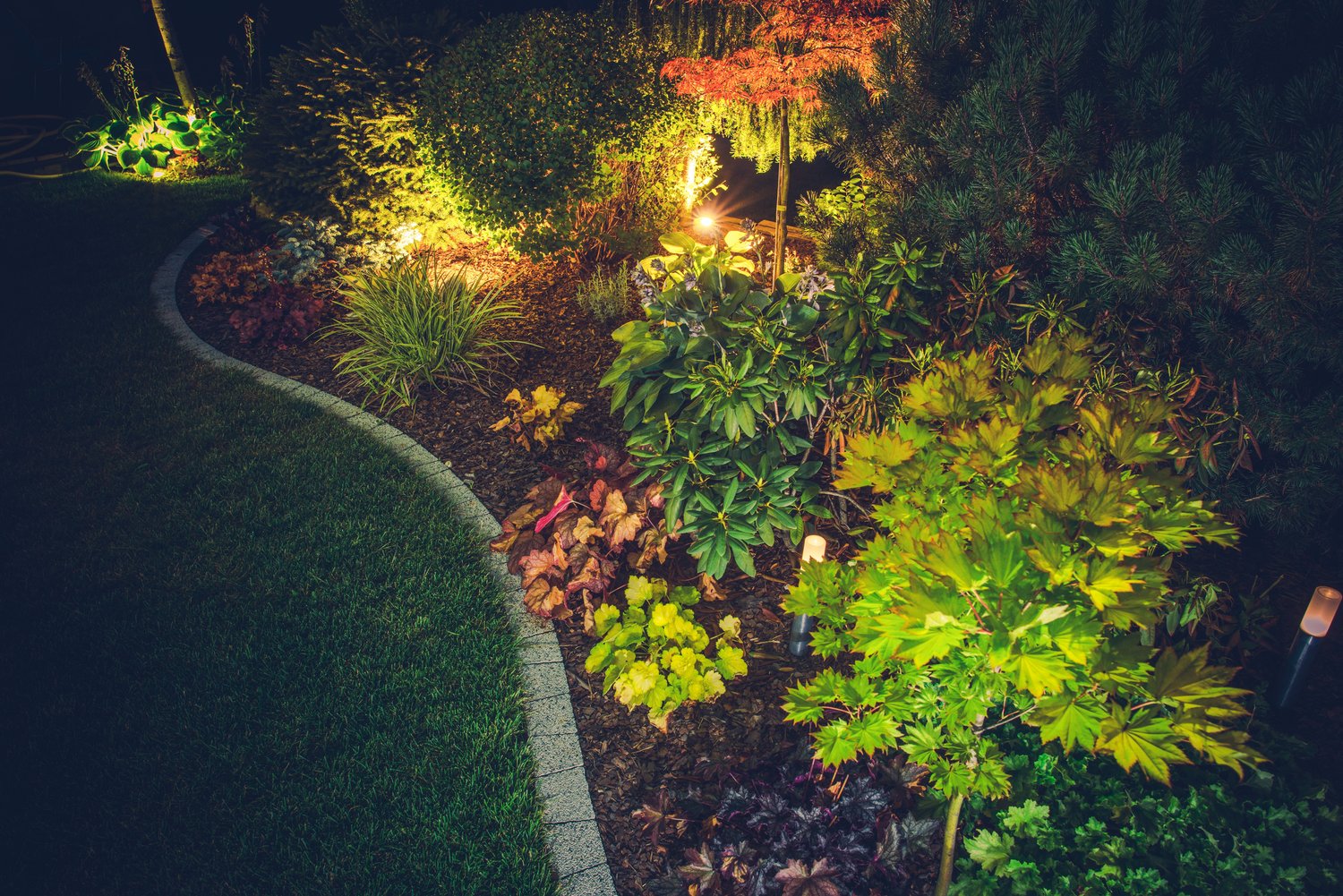A well-designed garden lighting scheme transforms outdoor spaces from daytime havens into enchanting nighttime retreats while simultaneously enhancing security. Strategic outdoor lighting design allows you to showcase your landscape’s best features, create intimate gathering areas, and ensure safe navigation throughout your property after dark. This article explores various garden lighting ideas and landscape lighting tips to help you illuminate your backyard effectively, balancing aesthetic appeal with practical considerations for an outdoor space that remains functional and beautiful long after the sun sets.
Understanding the Purpose of Garden Lighting
Before selecting fixtures, consider what you want to achieve with your outdoor lighting. Garden lighting serves multiple purposes beyond simply brightening dark areas. It can highlight architectural elements, draw attention to prized plantings, create dramatic shadows, define pathways, and deter potential intruders. Many homeowners find that their outdoor lighting needs fall into three main categories: ambient lighting for general illumination, task lighting for specific activities like cooking or reading, and accent lighting to showcase landscape features. By understanding these different functions, you can create a comprehensive plan to illuminate your backyard in a way that enhances both its beauty and utility.
Planning Your Outdoor Lighting Design
Successful landscape lighting begins with thoughtful planning. Start by walking your property at night with a flashlight to identify dark zones, potential hazards, and features worthy of highlighting. Consider how you use different areas of your garden and which spaces might benefit from extended evening use. Map out existing electrical outlets and determine whether you’ll need additional wiring or if solar-powered options might work in certain locations. According to lighting experts at AskHomey, the most effective garden lighting schemes appear natural and understated, avoiding the common mistake of over-illumination that can create a harsh, floodlit effect. A well-executed outdoor lighting design should enhance your garden’s natural features rather than dominating them.
Selecting the Right Fixtures
The market offers countless options for outdoor lighting fixtures, from traditional lanterns to contemporary LED systems. When choosing fixtures, consider both aesthetics and functionality. Path lights with downward-facing bulbs illuminate walkways without creating glare. Uplights positioned at the base of trees create dramatic shadows and highlight interesting bark or branch structures. Wall-mounted fixtures provide security around entry points while wash lights can bathe walls or fences in soft light. For dining or conversation areas, consider string lights, pendant fixtures, or recessed lighting under built-in seating. Always select fixtures rated for outdoor use in your climate, looking for appropriate IP (Ingress Protection) ratings that indicate resistance to moisture and dust.
Energy Efficiency and Technology Options
Modern garden lighting ideas increasingly incorporate energy-efficient technologies that reduce both environmental impact and operating costs. LED fixtures consume significantly less electricity than traditional incandescent bulbs while offering exceptional longevity—often lasting 25,000 hours or more. Solar-powered lights eliminate wiring challenges and operating costs, though they may provide less consistent illumination depending on your climate and positioning. Smart lighting systems represent the cutting edge of outdoor lighting design, allowing you to control brightness, color, and timing from your smartphone. Many systems integrate with home automation platforms, enabling your garden lights to respond to sunset times, motion detection, or voice commands.
Installation and Maintenance Considerations
While simple solar lights can be installed as DIY projects, complex landscape lighting systems often benefit from professional installation. Proper wiring, weatherproofing connections, and positioning fixtures for maximum effect requires expertise to execute correctly. When planning your installation, consider future landscape growth—lights positioned too close to shrubs or trees may become obscured as plants mature. Establish a regular maintenance schedule for your garden lighting system, including cleaning fixtures, replacing bulbs, adjusting positions as vegetation grows, and checking wiring for damage from weather or garden tools. Seasonal adjustments may also be necessary, particularly for solar lights that may need repositioning to capture maximum sunlight as the sun’s path changes.
Creating Atmosphere Through Layered Lighting
The most captivating gardens employ layered lighting techniques that combine different fixture types and illumination methods. This approach allows you to illuminate your backyard with depth and dimension rather than flat, uniform brightness. Consider incorporating uplighting for trees and architectural elements, downlighting from pergolas or tree branches to simulate moonlight, cross-lighting to eliminate harsh shadows, and silhouetting to showcase interesting plant shapes against walls. By varying light intensities and positioning throughout your garden, you create visual interest and guide the eye through the landscape, even after dark. Remember that less is often more with garden lighting—subtle illumination creates more sophisticated results than bright, all-over lighting.
For more tips and to connect with reliable home service professionals, follow AskHomey on Facebook and Instagram.



